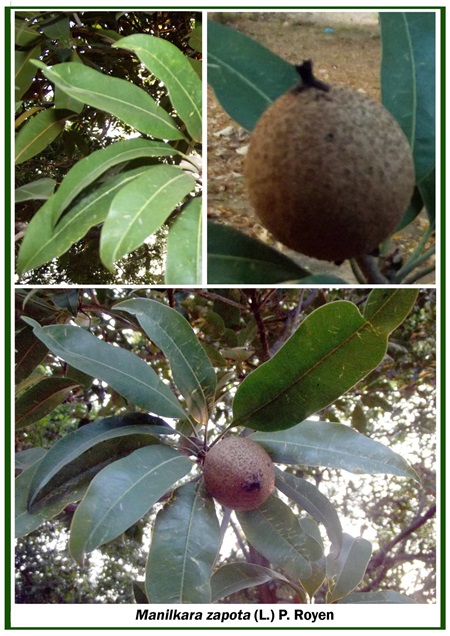Tree Details
 | |
| Manilkara zapota (L.) P. Royen | |
| Sapotaceae | |
| Chikoo | |
| சப்போட்டா | |
| Tree | |
| South-east Asia, Africa, Oceania | |
| Habit: It grows up to 18 m high in the open but reaching 30 m when crowded in a forest. Leaves: Its leaves are highly ornamental, evergreen, glossy, alternate, spirally clustered at the tips of the forked twigs; elliptic, pointed at both ends. Flower: Flowers are small and bell-like, with 3 brownhairy outer sepals and 3 inner sepals enclosing the palegreen corolla and 6 stamens. They are borne on slender stalks at the leaf bases. The fruit may be nearly round, oblate, oval, ellipsoidal, or conical. Fruit: The flesh ranges in color from yellowish to light- or dark-brown or sometimes reddish-brown; may be coarse and somewhat grainy or smooth; becomes soft and very juicy, with a sweet flavor resembling that of a pear Seeds: Some fruits are seedless, but normally there may be from 3 to 12 seeds which are easily removed as they are loosely held in a whorl of slots in the center of the fruit. They are brown or black, with one white margin; hard, glossy; long-oval, flat, with usually a distinct curved hook on one margin. | |
| Almost the throughout the year. | |
| Ascorbic acid, vitamin A, thiamine, Riboflavin, and Pantothenic acid, minerals such as calcium | |
| Fever, haemorrhage, wounds and ulcers. | |
| Botanical garden |